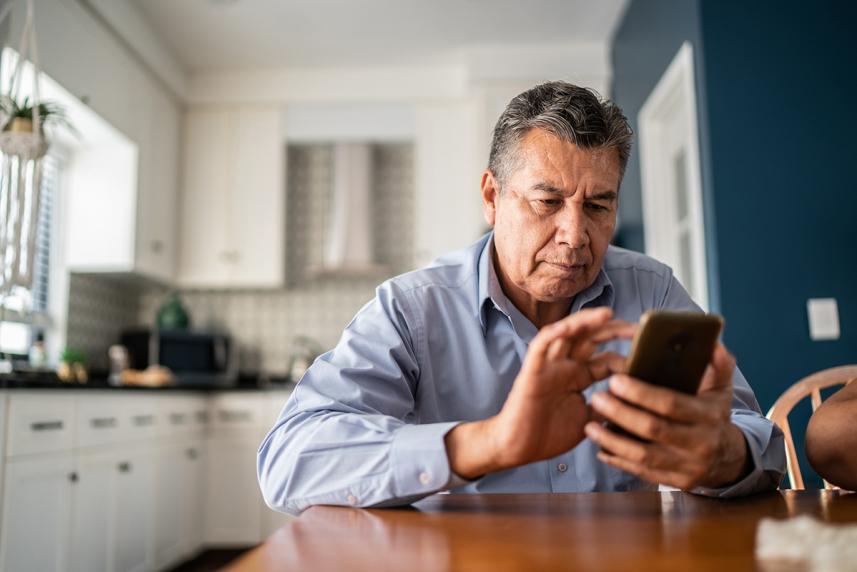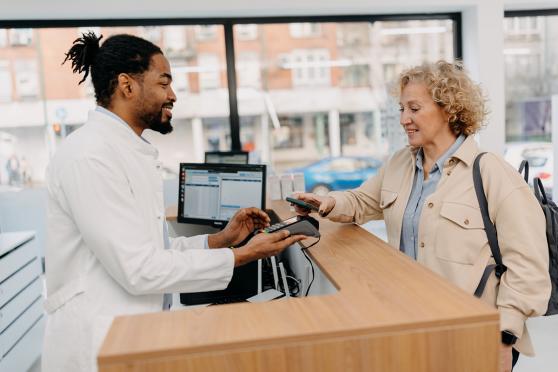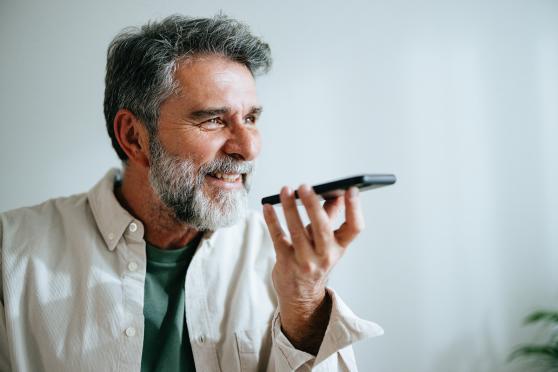Troubleshooting guide: Hearing aids are not connecting to Bluetooth
Try these simple tips to help fix common connectivity issues with your phone.

Bluetooth is a wireless technology that allows devices to connect with one another. Most hearing aids these days have Bluetooth capability.1
That means you can connect your hearing aids with another Bluetooth device such as a smartphone. You can also connect to a tablet or TV if they are Bluetooth enabled. Then you can stream phone calls, podcasts or TV shows directly into your hearing aids — as if they were headphones.2
You can also raise the audio volume or adjust [background noise] via an app on your phone or tablet.3 [LINK TO: “What is background noise?”]
But every so often you may run into connectivity glitches, says Lisa D. Bont, Au.D. She’s an audiologist and the owner of Advanced Audiology Services in Marysville, Michigan. Follow these tips to help troubleshoot Bluetooth issues.
[linkwellhealth_cta:cta_block]
Do both devices have Bluetooth turned on?
Check your phone and your hearing aids:
- Go to “Settings” on your smartphone to make sure Bluetooth is turned on.
- Place your hearing aids in the charger to turn them off, then take them out to turn them on again. Bluetooth will turn on automatically.
Are your devices paired?
The next thing to check is whether your hearing aids are paired (connected) to your phone. Your hearing care professional may have done this for you when you got your hearing aids. But sometimes you need to pair up your devices again.
If you have an iPhone: Go to “Settings,” then tap “Accessibility,” then “Hearing Devices.” You should see your hearing aids listed there.
If you have an Android: The app for your specific hearing aid may walk you through the pairing process. Or you can go to “Settings” on your phone, then tap “Connected Devices,” then “Pair New Device.” You should see your hearing aids listed there.
Still having trouble? Call the hearing aid manufacturer’s tech support team, Bont advises. There are different forms of Bluetooth, and not all are compatible with every Android phone or very old iPhones, she says.
You can also search online to find pairing directions for your brand of hearing aids.
Are your batteries running low?
If the [batteries in your hearing aids] aren’t powered up, this may affect how reliable your Bluetooth connection is, Bont notes. [LINK TO: “Common questions about powering your hearing aids, answered”]
To fix the issue, check the batteries. Rechargeable batteries tend to last 15 to 30 hours. But streaming can drain batteries so they lose power sooner.4 Disposable batteries last about 3 to 7 days, though some larger ones may last as long as 10 days.5
- If you have rechargeable batteries: Pop them in the charger.
- If you have disposable batteries: Replace them well before the charge runs out, Bont advises. That’s because Bluetooth connectivity drains batteries more quickly.
If you’re a member of AARP®, you get up to 3 follow-up visits at no extra cost — and a trial period to try out your new prescription hearing aids. Learn more.
Was your phone’s operating system just updated?
Automatic updates to your phone may cause some issues, says Bont. The phone manufacturers don’t always notify hearing aid companies when they’ve updated. “So we are sometimes caught off guard by the Bluetooth issues that start suddenly,” she says.
If this happens, try the following:
- Close the hearing aid app, then open it again.
- Restart your phone.
- Re-pair the device with your hearing aid.
Hearing aid apps are sometimes updated too. Some of these manufacturer’s apps will notify you when this happens. If so, update it right away, says Bont.
Did you have your hearing aids serviced recently?
Let’s say you just brought your devices to your hearing care professional to be repaired [or cleaned]. [LINK TO: “How to clean and care for your hearing aids”] Sometimes that may also disrupt the Bluetooth connection.
If that’s the issue, take them back to your hearing care professional, suggests Bont. They might have to:
- Update the software
- Erase all the Bluetooth-paired devices in the hearing aids themselves, then re-pair the hearing aids with the app and the phone
Then you can start streaming again — and get back to your favorite music and shows.
Sources
- Future forward: More connectivity enhances hearing aid technology ASHA Wire. Accessed June 1, 2025.
- Bluetooth hearing aids: A comprehensive guide for 2025 National Council on Aging. Accessed June 1, 2025.
- Assistive listening and alerting devices American Academy of Audiology. Accessed June 1, 2025.
- The 8 best rechargeable hearing aids of 2025 National Council on Aging. Accessed June 1, 2025.
- Frequently asked questions about hearing aids Johns Hopkins Medicine. Accessed June 1, 2025.
Information is for educational purposes only and is not a substitute for the advice of a licensed medical provider. Consult your provider prior to making changes to your lifestyle or health care routine.
AARP Hearing Solutions is available to all AARP members and does not require a health insurance plan from UnitedHealthcare. The AARP hearing program discount cannot be combined with any other discounts, promotions, coupons or hearing aid benefit plans unless noted herein. Products or services that are reimbursable by federal programs including Medicare and Medicaid are not available on a discounted or complimentary basis. AARP commercial member benefits are provided by third parties, not by AARP or its affiliates. Providers pay a royalty fee to AARP for the use of its intellectual property. These fees are used for the general purposes of AARP. Some provider offers are subject to change and may have restrictions. Please contact the provider directly for details. UnitedHealthcare Hearing is provided through UnitedHealthcare, offered to existing members of certain products underwritten or provided by UnitedHealthcare Insurance Company or its affiliates to provide specific hearing aid discounts. This is not an insurance nor managed care product, and fees or charges for services in excess of those defined in program materials are the member's responsibility. UnitedHealthcare does not endorse nor guarantee hearing aid products/services available through the hearing program. This program may not be available in all states or for all group sizes. Components subject to change.
Hearing aids purchased in the Silver technology level will receive 1 follow-up visit.


